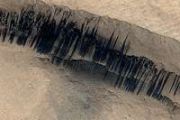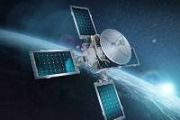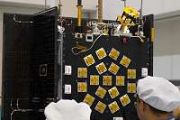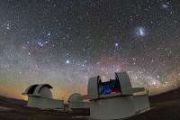
Copernical Team
Tachyons Redefine Theoretical Boundaries in Modern Physics
 Tachyons are hypothetical particles that exceed the speed of light. Often considered the "enfant terrible" of modern physics, these superluminal particles were previously thought to be incompatible with the special theory of relativity. However, a recent paper in Physical Review D by physicists from the University of Warsaw and the University of Oxford reveals that such assumptions were unfounde
Tachyons are hypothetical particles that exceed the speed of light. Often considered the "enfant terrible" of modern physics, these superluminal particles were previously thought to be incompatible with the special theory of relativity. However, a recent paper in Physical Review D by physicists from the University of Warsaw and the University of Oxford reveals that such assumptions were unfounde Spin Centers Propel Quantum Computing Forward
 Quantum computing, harnessing the principles of quantum mechanics, is set to revolutionize fields such as medicine and machine learning by tackling problems too complex for classical computers. Quantum simulators, which consist of interacting quantum units, can be programmed to emulate intricate physical models, allowing scientists to extract valuable insights by controlling and measuring the in
Quantum computing, harnessing the principles of quantum mechanics, is set to revolutionize fields such as medicine and machine learning by tackling problems too complex for classical computers. Quantum simulators, which consist of interacting quantum units, can be programmed to emulate intricate physical models, allowing scientists to extract valuable insights by controlling and measuring the in No New Physics Found in Higgs Boson Properties Study
 The Higgs boson, discovered over a decade ago in the Large Hadron Collider (LHC) detectors, remains elusive, with its properties still not fully understood. Recent progress comes from a collaboration between the Institute of Nuclear Physics of the Polish Academy of Sciences (IFJ PAN), RWTH Aachen University, and the Max Planck Institute for Physics, providing new insights into its origins.
The Higgs boson, discovered over a decade ago in the Large Hadron Collider (LHC) detectors, remains elusive, with its properties still not fully understood. Recent progress comes from a collaboration between the Institute of Nuclear Physics of the Polish Academy of Sciences (IFJ PAN), RWTH Aachen University, and the Max Planck Institute for Physics, providing new insights into its origins. Hydrogen-Powered Flight Nears Reality with New Technological Advancements
 The potential for hydrogen-powered flights opens up significant opportunities for fossil-free travel, with rapid technological advancements propelling this vision forward. Recent research from Chalmers University of Technology in Sweden indicates that nearly all air travel within a 750-mile (1200 km) radius could be serviced by hydrogen-powered aircraft by 2045. Moreover, a new heat exchanger un
The potential for hydrogen-powered flights opens up significant opportunities for fossil-free travel, with rapid technological advancements propelling this vision forward. Recent research from Chalmers University of Technology in Sweden indicates that nearly all air travel within a 750-mile (1200 km) radius could be serviced by hydrogen-powered aircraft by 2045. Moreover, a new heat exchanger un Scientists Advocate Major Study on Geoengineering for Glaciers
 A group of scientists has published a significant report on glacial geoengineering-an emerging field exploring whether technology could halt the melting of glaciers and ice sheets due to climate change.
This white paper marks the first public effort by glaciologists to evaluate potential technological interventions that might address catastrophic sea-level rise scenarios.
Although it
A group of scientists has published a significant report on glacial geoengineering-an emerging field exploring whether technology could halt the melting of glaciers and ice sheets due to climate change.
This white paper marks the first public effort by glaciologists to evaluate potential technological interventions that might address catastrophic sea-level rise scenarios.
Although it NASA spurs commercial development of news Fuel Cell technologies
 NASA's involvement with fuel cell technology began in the 1960s, a time when fossil fuels dominated energy production. Fuel cells create electricity and heat through the combination of hydrogen and oxygen via an electrolyte, producing only water as a by-product, making them an environmentally friendly power source.
NASA's interest in fuel cells arose from the need to power Moon missions. E
NASA's involvement with fuel cell technology began in the 1960s, a time when fossil fuels dominated energy production. Fuel cells create electricity and heat through the combination of hydrogen and oxygen via an electrolyte, producing only water as a by-product, making them an environmentally friendly power source.
NASA's interest in fuel cells arose from the need to power Moon missions. E Redwire to supply additional roll-out solar arrays for Thales Alenia Space satellites
 Redwire Corporation (NYSE: RDW), a prominent player in space infrastructure, has announced a new order to provide more Roll-Out Solar Array (ROSA) wings for Thales Alenia Space's Space Inspire* satellites. These satellites are part of Thales Alenia Space's latest geostationary telecommunications satellite line.
Thales Alenia Space, a joint venture between Thales (67%) and Leonardo (33%), i
Redwire Corporation (NYSE: RDW), a prominent player in space infrastructure, has announced a new order to provide more Roll-Out Solar Array (ROSA) wings for Thales Alenia Space's Space Inspire* satellites. These satellites are part of Thales Alenia Space's latest geostationary telecommunications satellite line.
Thales Alenia Space, a joint venture between Thales (67%) and Leonardo (33%), i SwRI and UTD collaborate on space sensor testing
 Researchers from Southwest Research Institute (SwRI) and The University of Texas at Dallas (UTD) are working together to test an advanced sensor aimed at measuring neutral gas velocities in the Earth's upper atmosphere. The project, under the leadership of Dr. Joo Hwang from SwRI and Dr. Phillip Anderson from UTD, is funded by the new SwRI/UTD Seed Projects for
Researchers from Southwest Research Institute (SwRI) and The University of Texas at Dallas (UTD) are working together to test an advanced sensor aimed at measuring neutral gas velocities in the Earth's upper atmosphere. The project, under the leadership of Dr. Joo Hwang from SwRI and Dr. Phillip Anderson from UTD, is funded by the new SwRI/UTD Seed Projects for Planet Labs Secures Pilot Contract for AI-Enhanced Satellite Data
 Planet Labs PBC (NYSE: PL), a top provider of daily Earth data and insights, announced a seven-figure pilot contract with an international defense ministry for its PlanetScope data, now enhanced with SynMax's AI-based Theia solution.
Together with SynMax, a Houston-based satellite analytics and intelligence company, Planet is offering an advanced maritime domain awareness (MDA) solution fo
Planet Labs PBC (NYSE: PL), a top provider of daily Earth data and insights, announced a seven-figure pilot contract with an international defense ministry for its PlanetScope data, now enhanced with SynMax's AI-based Theia solution.
Together with SynMax, a Houston-based satellite analytics and intelligence company, Planet is offering an advanced maritime domain awareness (MDA) solution fo Ramon.Space expands to UK to boost space computing development
 Ramon.Space, a leader in space-resilient computing infrastructure, has announced the opening of its new subsidiary, Ramon.Space UK. This move marks the company's first office in Europe, underscoring its commitment to advancing space computing and communications worldwide.
The new UK office will act as a key engineering hub, focusing on driving innovation and accelerating advancements in sp
Ramon.Space, a leader in space-resilient computing infrastructure, has announced the opening of its new subsidiary, Ramon.Space UK. This move marks the company's first office in Europe, underscoring its commitment to advancing space computing and communications worldwide.
The new UK office will act as a key engineering hub, focusing on driving innovation and accelerating advancements in sp 





























